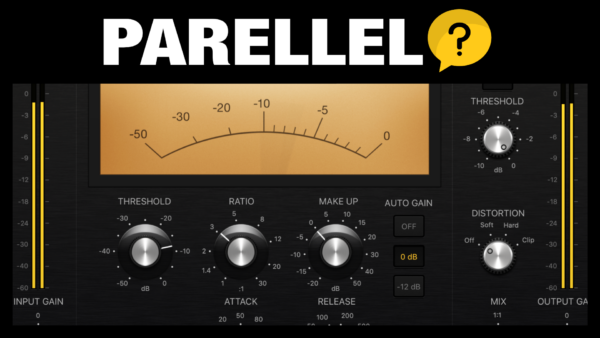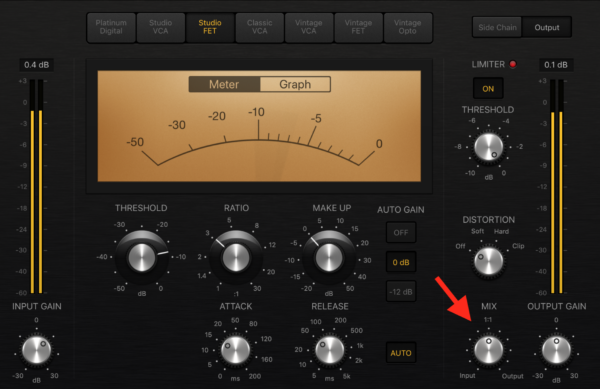 Do you want to learn how to use the power of parallel compression in your music productions?
Do you want to learn how to use the power of parallel compression in your music productions?
Parallel compression is a technique of blending the dry unprocessed sound with all dynamics intact, with a compressed sound. This way you can use a lot harder compression because you will blend it in with the dynamic natural sound.
Parallel Compression (Step by Step)
- Create a Send FX Channel (aux track) in your Mixer.
- Add a Compressor FX Plugin on this aux track.
- Dial in your Compressor Settings (use Heavy Compression).
- Use an FX Send on any track (ex: your drum bus channel).
- Change the Send to “Pre-Fader” mode.
- Dial in the Send Value to mix in the compressed signal.
Note: The reason for why you want to use “pre-fader” send mode, is because otherwise changing the channels level (fader) will affect the input into the compressor. That will mess with the compressor settings you already set up.
If you use “pre-fader” you can change the level of the track (volume fader), and the compressor will still affect the sound in the same way since it will affect the sound before the fader in the signal chain.
Parallel Compression (Easy Method)
 There is an even easier way of using parallel compress, that I personally use and recommend. And that is to use a compressor plugin which has a “dry/wet” knob.
There is an even easier way of using parallel compress, that I personally use and recommend. And that is to use a compressor plugin which has a “dry/wet” knob.
Because this means you can do parallel compression right in the compressor plugin itself. With this dry/wet knob you can dial in how much of the dynamic unprocessed sound you want in relation to the “wet” signal, which in this case is the compressed sound.
I recommend that you start by setting the compressor plugin to 100% wet, so that you can choose the settings for your compression while listening to the fully affected sound. And don’t worry if it sounds super squashed and crushed, because you will not use it this way in the end.
After you set your heavy compression settings, I recommend going back to 0% wet, meaning a complete dry signal on the compressor.
This means it does not affect the sound at all. Then you slowly increase the “wet” level, which means you mix in the heavily compressed audio, until you find a mix that you like.
When to use Parallel Compression?
Since parallel compression is so powerful, you should not use it everywhere. Choose which instruments and sounds you want to push harder and increase the weight and power of in your mix.
Good candidates for parallel compression are: your drums/percussion mixing group, your vocals group, or perhaps even rhythmic groups like “rhythm guitars”, “staccato strings” etc. I prefer using parallel compression on mixing groups in most cases, since it will also work as a “glue” for the section.
